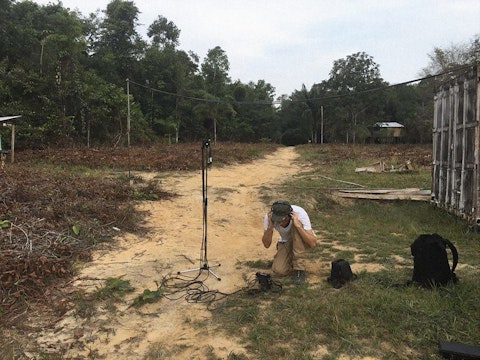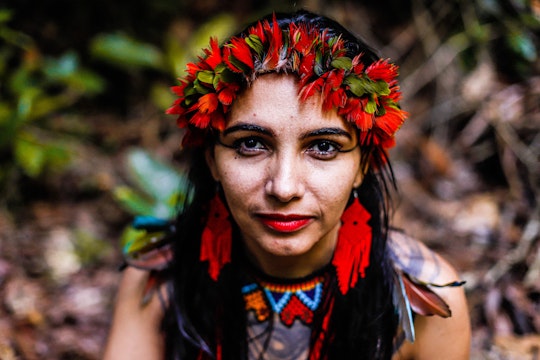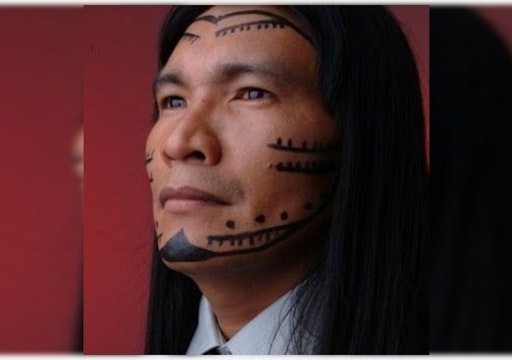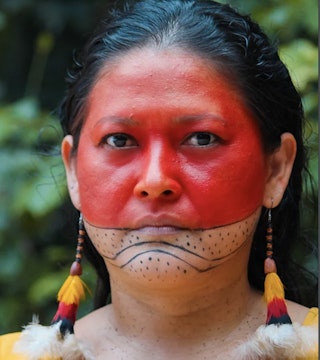Voices of the Forest - Interspecies Community Broadcast
Radio Vozes da Floresta (Voices of the Forest) consists of a stream of the soundscape of the Central Amazon rainforest
Radio Vozes da Floresta (Voices of the Forest) consists of a stream of the soundscape of the Central Amazon rainforest
This stream is generated from interval audio recordings made in 2018/2019 at the LBA/AmazonFace research station of the National Institute for Research on the Amazon INPA. Three automated audio recording devices distributed throughout the forest recorded 20 seconds of the rainforest soundscape at ten-minute intervals. These recordings are automatically crossfaded without gaps on the web radio – creating a continuous flow consisting of the diurnal cycles and seasonal changes in the soundscape of the forest.
Vozes da floresta as a radio program is inspired by the first book by Swiss environmental activist Bruno Manser. In “Stimmen aus dem Regenwald” (Voices from the Rainforest) from 1992, he pointed out the threat to the rainforests of Borneo through deforestation for the first time. In addition to his own descriptions, he mainly let the voices of the forest – statements and reports from the indigenous population of the Penan, as well as scientists and journalists – have their say. This is to be taken up in our radio project insofar as we seek for the participation of artists, scientists and indigenous communities living or working in the Brazilian Amazon regions to contribute to a radio program that we will set up as an auditive network of (indigenous, artistic and scientific) knowledge concerned with the Amazon rainforest and its threats. Furthermore, Manser’s idea is to be extended to the non-human inhabitants of the rainforest by integrating their voices as well – that is why we call our radio an interspecies community broadcast.
One essential aspect distinguishes the soundscape of the Amazon rainforest from European forests. As the biodiversity of audible animals is extremely high, the tropical soundscape is structured much more densely and intensively than in temperate forests. And yet, the rainforest soundscape is highly organized: the audible animals each have their acoustic niche in which they communicate, mark their territory, warn of enemies and attract sexual partners. This means that the auditory spectrum of the rainforest is structured into precisely defined frequency bands within which animals of individual species communicate with each other and thus the frequencies of their sounds practically do not overlap or interfere. And if individual animals do communicate in the same frequency bands, they are active in different time windows. This discovery was made by the eco-acoustician Bernie Krause in the 1970s.
Human voices – artificial, artistic or musical – are to be integrated into this mesh of acoustic information, supplementing the rainforest soundscape with audible human thought and action. An easy-to-use schedule and upload function enables project contributors to play their acoustic contributions once or several times in the broadcast stream. Any form is possible here: a piece of music, a manifesto, scientific findings and texts, personal thoughts and observations, and so on. The only and most important requirement is that what is produced integrates harmoniously into the soundscape and does not interfere with the other sound sources, be it the sounds of the animals or the other contributions. The focus is on an artistic, scientific and social practice that sees itself as (even if only metaphorically) part of the soundscape and thus of the rainforest ecosystem.
From time to time, however, the virtuality of the web radio shall also find manifestations in the analog world: The artistically, scientifically and socially extended rainforest soundscape is to be used in live performances in various festivals.






